Dog socialization is an essential part of raising a puppy into a happy, well-adjusted adult. Once you bring your new puppy home, you have the opportunity to help shape your puppy's social development. Adult dogs can be socialized too, it just takes a bit longer and must be done more carefully.
Here's how to properly socialize a dog, from puppyhood to adulthood.
What Is Socialization in Dogs?
Dog socialization is the process of exposing and acclimating a dog to a variety of situations that they may encounter throughout their lives. The goal of socialization is to teach a dog how to interact appropriately with people and other animals, as well as how to handle new experiences and environments without becoming anxious or fearful.
Socialization is an essential part of a dog's development and can help prevent behavior issues such as anxiety, reactivity, and aggression.
The ideal time to socialize a puppy is roughly between the ages of three and 14 weeks. This age range is considered a critical socialization period for puppies—their brains are most receptive to new experiences and they typically can learn without significant fear. After about 14-15 weeks of age, it becomes more difficult for puppies to adapt to new situations, and they may develop behavioral issues. However, socialization is also important for adult dogs who have had limited exposure to new experiences and environments.
Dog socialization can be done through exposure to different people, animals, and environments in a controlled and positive manner.
5 Tips on How to Socialize a Dog
- 01 of 05
Attend Regular Vet Visits

Vet Examining a Dogs Ear Getty - Cultura/Ghislain & Marie David de Lossy The vet's office is one of the first new places your dog will visit after joining your home. These early vet visits are important for their health as well as their continued social development, whether they're a puppy or adult. Work with your vet to keep these visits positive and fun. Provide plenty of treats and praise to establish a positive association with the vet.
If your dog is extra nervous, you can look for Fear-Free Certified veterinary providers in your area. These individuals and hospitals have received additional training in making veterinary care as low-stress and positive as possible for pets and people.
02 of 05Keep Your Dog Safe
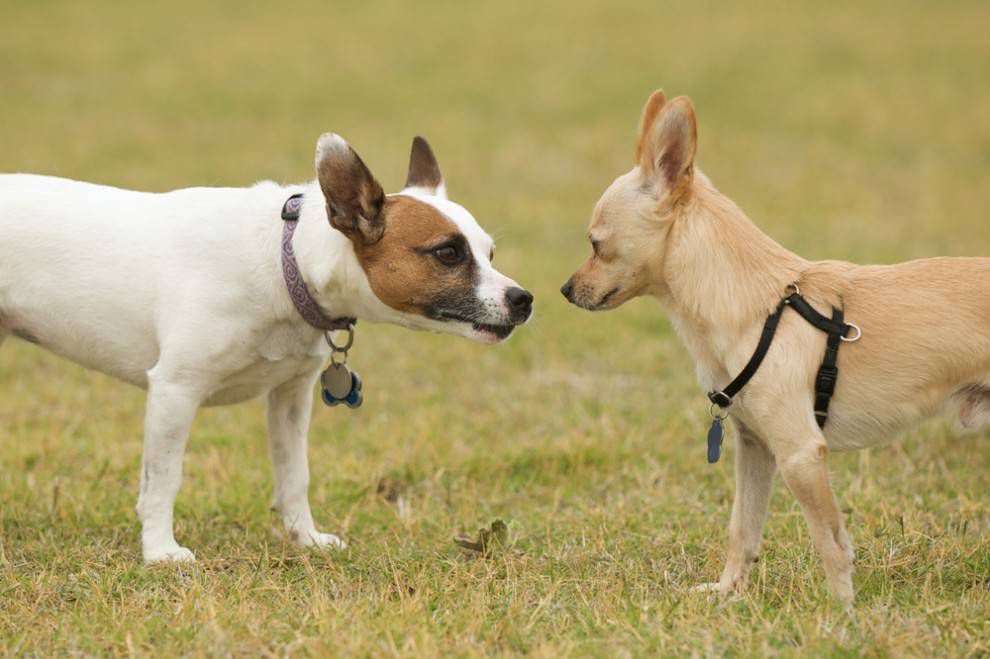
Pay close attention to your dogs' body language. They can become agitated or defensive. Peggy Woods Ryan /Shutterstock Adult dogs only need vaccines about once a year, but puppies will receive a plethora of vaccines and undergo treatments like deworming until they're 16 weeks old., Until their initial vaccines are finished (around 16 weeks of age), puppies are still vulnerable to diseases. This means they should not be exposed to unknown animals or their feces. Avoid parks (including dog parks) and any other place where dogs gather in public.
No matter your dog's age, they should meet other dogs, but it's important to make sure that the dogs you are introducing your pup to are healthy, vaccinated, and friendly. Negative experiences can cause increased anxiety in your dog when around all dogs. Consider setting up puppy playdates with friends and their dogs, if you've met them before.
03 of 05Enroll In Training Classes Together
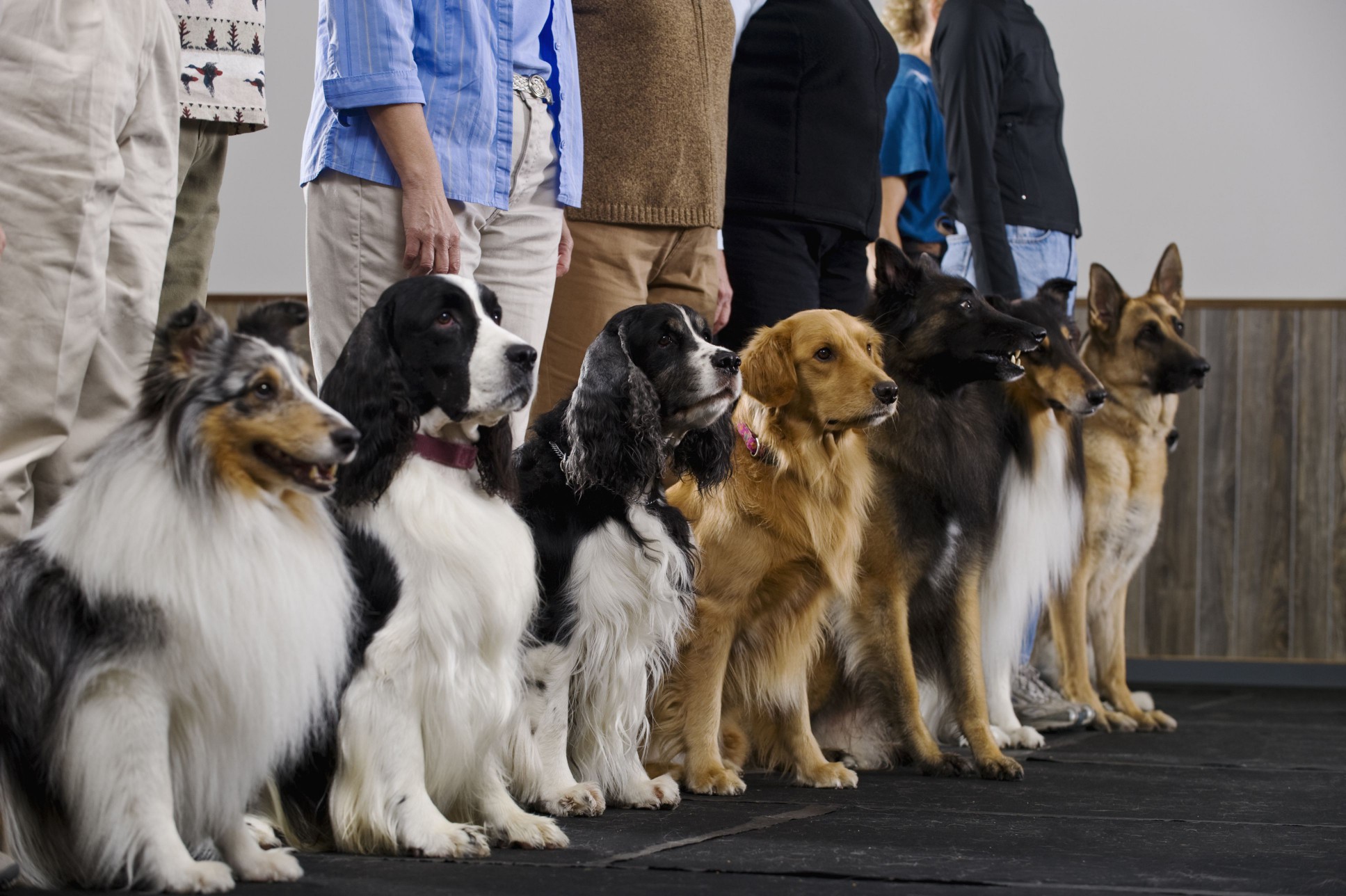
Don't expect the dogs to line up like this on the first day of class! Apple Tree House/Digital Vision/Getty Images Puppy training classes, sometimes called "puppy kindergarten," are typically available at local pet supply stores, dog training facilities, some veterinary clinics and boarding facilities. These socialization classes should only allow healthy puppies with current vaccinations to attend and should only be using positive reinforcement training and socialization techniques. This is what makes it a safe environment for your pup. These classes are mainly designed to help socialize your pup with other puppies and people. Some basic cues may be taught during these classes, but the focus will be on building bonds and foundations for future training.
There are plenty of training classes available for adult dogs as well. Consider enrolling your adult dog in a more specialized course that focuses on socialization with other adult dogs.
04 of 05See the Sights
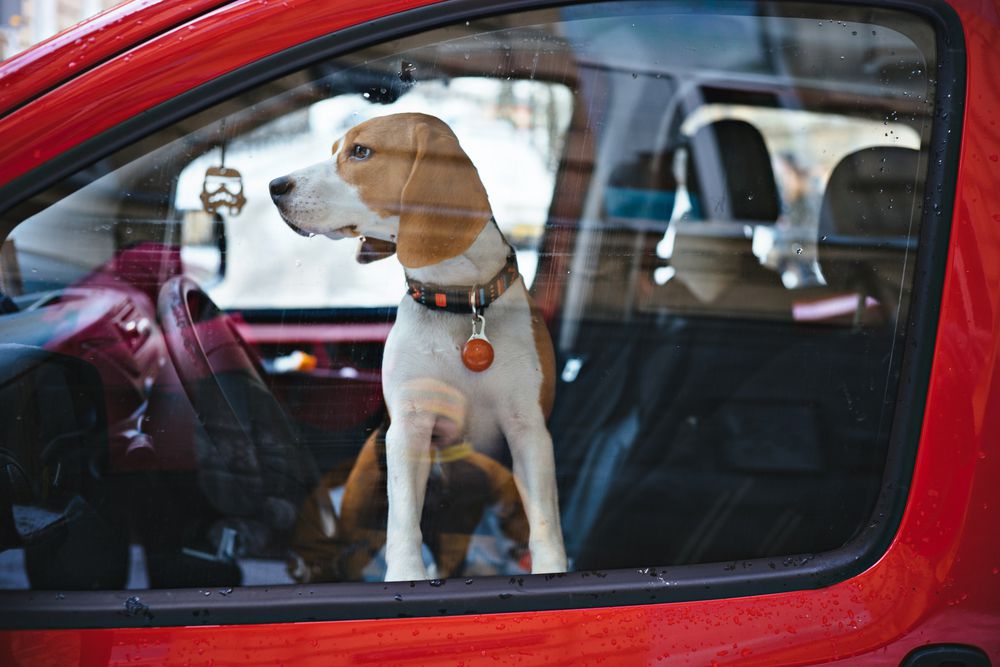
Just leave the little doggie in the car alone. Iryna Inshyna/Shutterstock Your dog needs to experience a variety of sights, sounds, and scents in the world. Things like traffic, construction, and large buildings can be scary for dogs when they first encounter them, but they can learn to accept these things through gradual, gentle exposure and positive reinforcement.
- Take your dog on car rides and walks to places like pet stores and friends' houses.
- Stop by the vet for a happy social visit (no shots, just say hi and offer treats).
- Introduce your dog to a variety of people of different ages, sizes, and ethnicities wearing a variety of things (such as hats and costumes). Make sure these people know you are socializing your pup and ask them to behave in a calm way.
- Introduce them to other dogs and animals, but make sure the other dogs are friendly, healthy, and fully vaccinated.
- If your dog encounters unknown dogs, teach them to remain calm and to focus on you rather than pulling on the leash.
Positive reinforcement is key. Use treats and praise to reward your dog for good behavior when they interact with people and animals. It's also important to monitor your pup's reactions at all times. Keep an eye on their interactions with people and animals to ensure they are comfortable and not overwhelmed. Gradually increase the intensity and duration of socialization experiences as your dog becomes more comfortable and confident.
Educate yourself on the subtle signs of fear and anxiety in dogs. If you notice any of these signs during your interaction with a stimulus, it's critical to back up and allow your dog time to calm down and reassess the situation. It may be a good time to call it a day on training, or you may try again with higher reward treats. However, if signs of fear and anxiety continue, remove your pet altogether from the situation.
Continue to 5 of 5 below05 of 05class="comp sources mntl-block">Practice Handling Your Dog Often
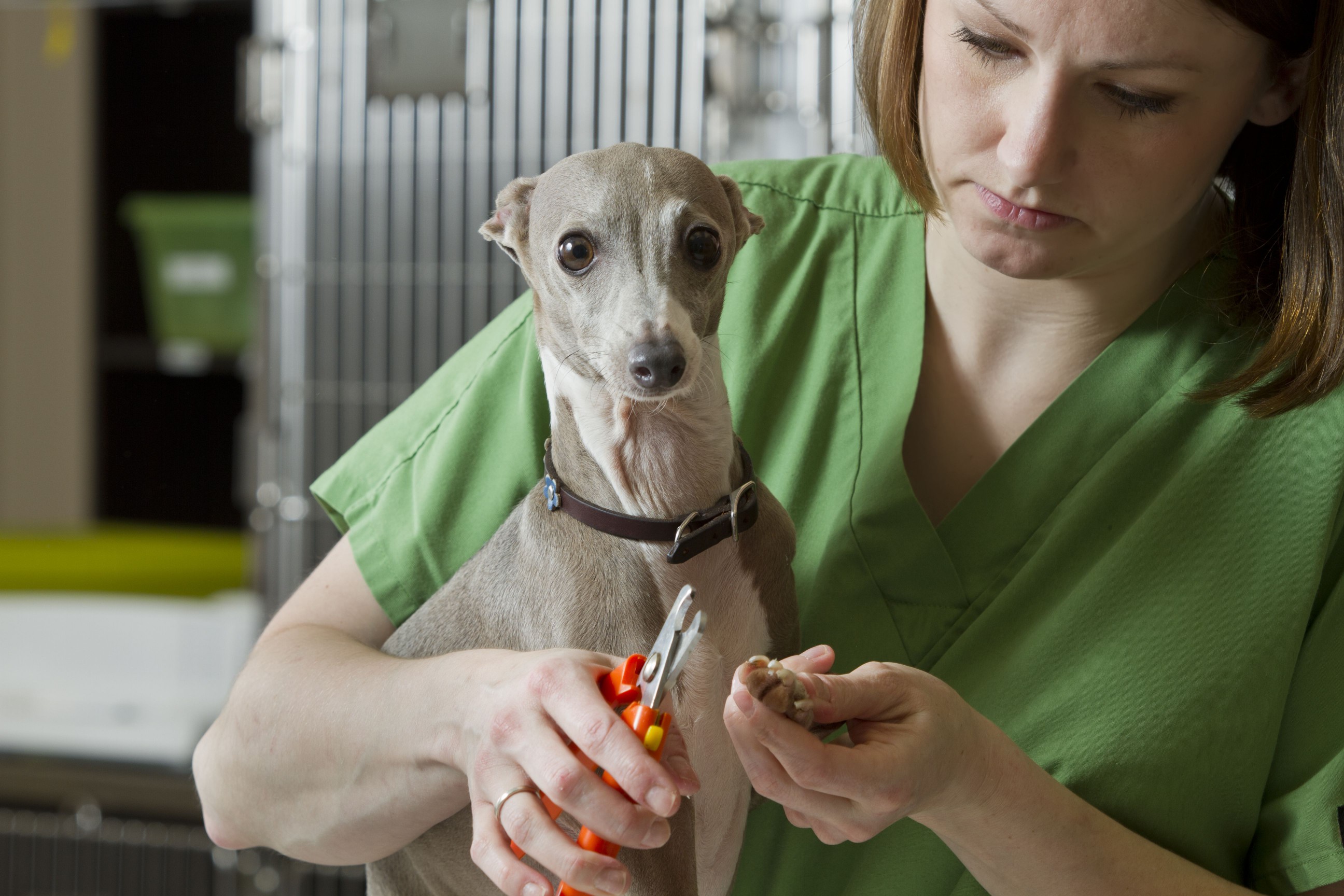
Malcom MacGregor / Getty Images
Another important step in the socialization process is getting your dog used to being handled. Vet visits will help with this, but it's important to continue practicing at home.
Begin handling your dog from the moment you bring them home. This will help them get used to being touched and handled, which will make them more comfortable around people and reduce the risk of fear and anxiety as they continue to socialize.
Here are a few handling scenarios to try with your new dog:
- Spend time handling your dog's head and body, including the ears, eyes, mouth, paws, and tail. This will help them become familiar with the feeling and prepare them for grooming and vet visits.
- Teach your dog to be comfortable with restraint by gently holding them still and rewarding them for staying calm. This will help them better tolerate being held for grooming, nail trimming, and other activities.
- Always handle your dog gently and with care. Use a calm and soothing voice and avoid rough movements or sudden actions that could startle or frighten them.
- Reward your dog for good behavior during handling with treats, praise, and affection so they will associate handling with positive experiences and be encouraged to stay calm and relaxed during future handling sessions. Using treats and praise and even allowing your pet to "opt-in" to handling through cooperative care exercises is the safest and best way to teach your pup to accept handling long-term.
Warning
Do not forcibly place your dog on their side, back or hold them down to teach them "dominance." This increases fear and anxiety and damages the bond you are trying to build with your pup.Additional Tips for Socializing an Adult Dog
Socializing an adult dog may be a bit more challenging than socializing a puppy, but it's still possible with some patience and effort.
Here are some additional pieces of advice for adult dog owners to incorporate.
- Take it slow. Start by introducing your dog to new people and animals in a calm and controlled environment. Don't rush the process or overwhelm your dog with too many new experiences at once.
- Use positive reinforcement. Provide treats and praise to reward your dog for good behavior when they interact with people and animals.
- Practice obedience training. Obedience training can help your dog learn to focus and follow cues, which can make socialization easier.
- Monitor interactions. Keep an eye on your dog's interactions with people and animals to ensure they are comfortable and not overwhelmed.
- Be patient. Socialization takes time, and it's important to be patient with your dog as they get used to new situations and experiences.
- Get professional help. If you're having trouble socializing your adult dog, consider hiring a certified dog trainer or behaviorist who can work with you and your dog to develop a socialization plan.
Remember, socializing an adult dog may take longer than socializing a puppy, but it's never too late to start. With patience, positive reinforcement, and consistency, you can help your adult dog become a well-adjusted and happy member of your family.

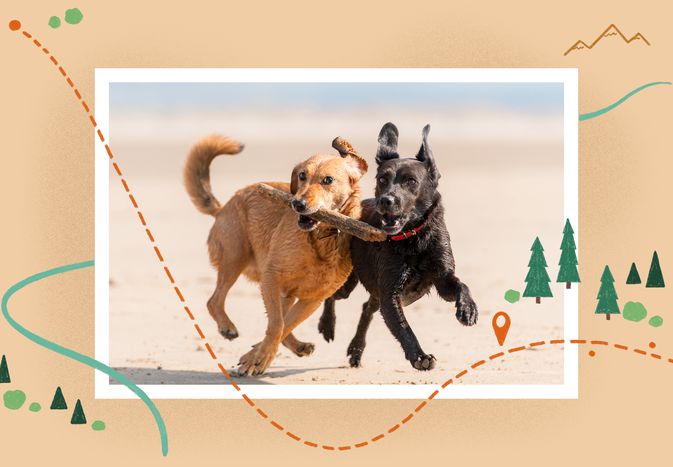



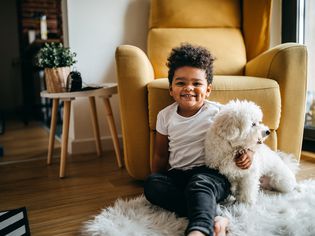


Comments on " Socializing Your New Dog Is So ImportantâHereâs How To Do It" :